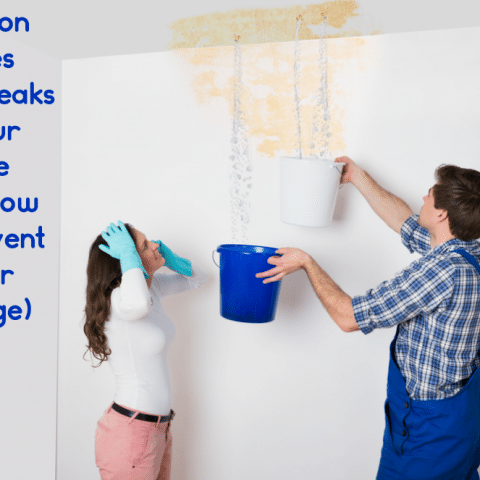The article down below in relation to Detecting hidden plumbing leaks is exceptionally enjoyable. Check it out for your own benefit and see what you think about it.

Early detection of leaking water lines can mitigate a possible disaster. Some tiny water leaks may not be noticeable.
1. Check Out the Water Meter
Examining it is a surefire way that aids you find leaks. If it relocates, that indicates a fast-moving leakage. This implies you might have a slow leakage that could also be below ground.
2. Check Water Consumption
Examine your water costs and track your water intake. As the one paying it, you need to notice if there are any type of inconsistencies. If you identify sudden changes, in spite of your intake being the same, it implies that you have leaks in your plumbing system. Keep in mind, your water bill must fall under the very same variety every month. A sudden spike in your bill indicates a fast-moving leak.
A stable boost every month, also with the exact same practices, reveals you have a sluggish leakage that's also gradually intensifying. Call a plumber to extensively examine your residential property, specifically if you feel a warm location on your flooring with piping beneath.
3. Do a Food Coloring Test
When it concerns water intake, 30% originates from commodes. Examination to see if they are running appropriately. Drop flecks of food color in the storage tank and wait 10 mins. There's a leakage in between the tank and dish if the shade in some way infiltrates your dish during that time without flushing.
4. Asses Outside Lines
Do not fail to remember to inspect your outdoor water lines also. Examination faucets by affixing a garden hose. Needs to water permeate out of the link, you have a loose rubber gasket. Replace this and also guarantee all links are limited. If you've obtained an automatic sprinkler, it will help get it professionally examined and also preserved annually. One little leak can squander lots of water and surge your water bill.
5. Check and also Examine the Scenario
Home owners must make it a routine to inspect under the sink counters and also inside cabinets for any bad odor or mold and mildew growth. These 2 red flags suggest a leakage so timely interest is required. Doing regular assessments, also bi-annually, can save you from a significant issue.
Inspect for discolorations and also compromising as most pipelines as well as appliances have a life expectancy. If you believe leaking water lines in your plumbing system, don't wait for it to intensify.
Early discovery of leaking water lines can minimize a potential catastrophe. Some tiny water leakages may not be visible. Checking it is a surefire means that helps you uncover leaks. One tiny leakage can waste heaps of water and spike your water costs.
If you think dripping water lines in your plumbing system, do not wait for it to rise.
How to Know If Your Home Has a Hidden Leak
Water Meter Reveals Inexplicable Water Usage
If you’d like to test whether or not there’s a leak somewhere in your home, you can do this using your water meter. Here is how to conduct the test:
Don’t use any water in your home for at least 30 minutes; this also means not turning on faucets or water-using appliances.
Go outside, and check your water meter for activity.
If your water meter shows that there was activity, even though no one was using any water, this proves that there is a leak in your home.Visible Mold or Mildew Growth
Leaks behind walls create moist, dark environments that allow mold and mildew to grow and thrive. Eventually, you might see mold growth forming on the wall closest to a hidden leak.
If mold is growing in an area that receives a high amount of moisture, such as a bathroom, it may simply be an indication that better ventilation is needed. However, if you see mold growth on a wall or the ceiling in an area where you would not expect, you probably have a hidden leak.
Musty, Mildew Odor
Sometimes you might not be able to see the mold or mildew that is growing as a result of a leak. However, the smell can give the problem away just as easily. If you catch a whiff of something musty, there’s a good chance that old water is collecting somewhere in your home that you can’t see.
Stained/Warped Walls, Ceilings, or Floors
When your home soaks up water, a variety of red flags can become visible, including ceiling stains, bubbling drywall, warped walls, and sagging floors. While these issues can be caused by excess humidity, they can also be signs that a pipe or plumbing connection has started leaking behind your walls.
Inexplicably High Water Bill
After a while, you get a general sense for what your water bill should be. If you own a pool or sprinkler system, your bill will tend to be higher during summer. However, if you receive a water bill that seems especially high, and you can’t figure out what caused it, then you may have a hidden leak somewhere that’s increasing your bill.
https://www.plumbingjoint.com/blog/2019/july/how-to-know-if-your-home-has-a-hidden-leak/

Hopefully you liked our excerpt on Leaking water lines. Thanks a lot for taking a few minutes to read our content. Enjoyed our review? Please share it. Help somebody else check it out. Bless you for your time. Come back soon.